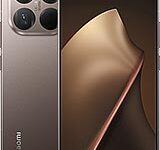Powerbeats Fit: Secure, Comfortable, and Ready for Your Workout.

Powerbeats Fit Review: Analysis and Assessment
The Powerbeats Fit, the latest iteration in the Powerbeats series from Beats by Dr. Dre, a subsidiary of Apple, offers a true wireless earbud solution positioned for fitness-oriented users. These earbuds succeed the 2021 Beats Fit Pro and expand upon the Powerbeats line, which includes the recently reviewed Powerbeats Pro 2. This review provides a comprehensive analysis of the Powerbeats Fit, evaluating design, features, performance, and overall value.
Design and Comfort
The Powerbeats Fit maintains a design aesthetic similar to the Beats Fit Pro, characterized by a robust form factor and integrated wingtips designed for secure in-ear fit. The wingtips, intended to nest within the cymba concha of the outer ear, are reportedly 20% more flexible than those found on the Fit Pro, potentially enhancing comfort. Insertion requires a twisting motion to engage the wingtips properly.
A prominent Beats button on each earbud facilitates control functions. Its size, however, can lead to inadvertent activation during handling. This button’s functionality is customizable, and, by default, controls playback, ANC mode, and call management.
The accompanying charging case, though compact (17% smaller than its predecessor), presents ergonomic challenges. The smooth texture and minimal lip make it difficult to open, leading to potential handling issues. This case and the earbuds are both sweat and water-resistant.
In terms of comfort, the Powerbeats Fit performed adequately. The elimination of ear hooks, present in earlier iterations, proves beneficial. The wingtips provide a secure fit suitable for typical workout durations; however, pressure exerted by the wingtips may cause discomfort after extended use (approximately two hours in testing). The chunky design may also contribute to a sense of fullness within the ear canal.
Software and Features
The Powerbeats Fit offers cross-platform compatibility, supporting both Apple and Android devices. For Android devices, a dedicated app provides basic feature control, including ANC mode adjustment, button customization, and firmware updates. Integration with Apple devices unlocks additional functionalities such as Spatial Audio with head tracking, one-touch pairing, Audio Sharing, hands-free “Hey Siri” activation, and Find My integration.
The Beats button functionality is user-configurable, allowing users to select between ANC mode toggling and volume control.
The Powerbeats Fit offers two primary listening modes. With ANC disabled, the Adaptive EQ function utilizes internal microphones to calibrate sound output, optimizing frequency response to compensate for individual ear shape and potential sound leakage. When ANC or transparency mode is activated, internal microphones are dedicated to noise monitoring, disabling Adaptive EQ.
In ANC-off mode, the audio profile is characterized by a balanced sound with a fleshed-out mid-range and a smooth, neutral treble response. The bass, while engaging, remains consistent across modes. The overall sound presents a warm, full-bodied timbre with a slightly emphasized bass response.
Activating ANC results in changes to the sonic profile, including a diminished mid-range, sharper treble, and a more V-shaped tonality. The difference is subtle; some users may prefer this more lively presentation.
The Powerbeats Fit offers a well-implemented ANC-off mode, unlike many competitors. This mode is a creative application of the technology, which often disables audio processing features to optimize battery life.
Performance
The Powerbeats Fit’s microphone quality is considered mediocre, typical of many Bluetooth earbuds, especially within the budget-friendly category. Apple’s H2-equipped models demonstrate superior microphone performance.
Active Noise Cancellation (ANC) performance is rated as good, delivering effective coverage in lower and mid-range frequencies. However, some higher frequencies may penetrate due to ear tip insertion depth. While not achieving the performance of Apple’s AirPods Pro models, the Powerbeats Fit’s performance is still acceptable overall.
The transparency mode exhibits commendable performance. The resulting sound provides a natural audio experience, allowing users to perceive ambient sounds accurately.
The Powerbeats Fit also delivers good latency performance. This performance is sufficient for music playback and workout videos.
Connectivity during testing proved reliable. Connection dropouts occurred only when tested through solid brick walls, indicating consistent signal stability in typical usage scenarios.
Battery Life
The Powerbeats Fit is rated for a 7-hour battery life with ANC disabled and a 6-hour battery life with ANC enabled. In testing, the earbuds achieved 8 hours and 11 minutes with ANC disabled and 6 hours and 45 minutes with ANC enabled.
Rapid charging provides one hour and 19 minutes of playback after a five-minute charge with ANC disabled. The charge time with ANC enabled was tested at approximately 45 minutes.
The charging case lacks wireless charging, a notable omission for a product priced at $200.
Conclusion
The Powerbeats Fit, priced at $200, is a premium offering targeting fitness-focused consumers. As a workout-centric product, the Powerbeats Fit delivers a secure and comfortable fit, water and sweat resistance, and acceptable audio quality. The Active Noise Cancellation and Transparency Mode are good and further enhanced by integration with Apple devices. Android users will benefit from a dedicated app.
The Powerbeats Fit presents a viable option for users seeking fitness-focused earbuds that provide the security of in-ear design. However, Android users may find that other products offer more feature compatibility or value.




